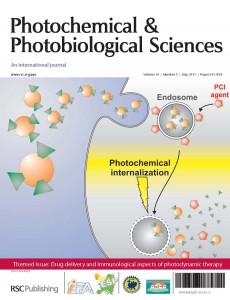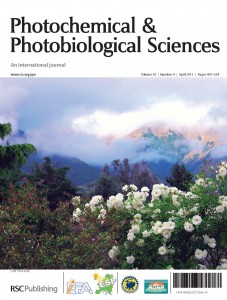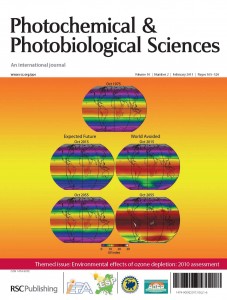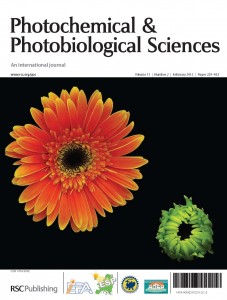 Photochemical and Photobiological Sciences Volume 11, Issue 2 is now online, read the full issue here. You can keep up to date with the latest developments from PPS by signing up for free table of contents alerts.
Photochemical and Photobiological Sciences Volume 11, Issue 2 is now online, read the full issue here. You can keep up to date with the latest developments from PPS by signing up for free table of contents alerts.
The front cover of Issue 2 features work from Xiaojing Wang and co-workers from South China Normal University in Guangzhou. Light and gibberellings are important regulators of plant organ growth, however little is known about their roles in petal size determination. In this paper the team report that light improves the length and width of the ray floret petals in Gerbera hybrida but gibberellic acid only promotes the petal length. The control of the petal size by light and gibberellic acid depends on cell size modulation, which is governed by the behaviour of cortical microtubule. Their front cover shows that light promotes the growth and opening of Gerbera hybrida inflorescence even in the absence of gibberellic acid (upper left), while those cultivated in darkness without gibberellic acid are unable to open and grow regularly (lower right).
Interested in knowing more? Read the article for free for the next 6 weeks!
Cell expansion and microtubule behavior in ray floret petals of Gerbera hybrida: Responses to light and gibberellic acid
Lili Zhang, Lingfei Li, Jie Wu, Jianzong Peng, Lingrui Zhang and Xiaojing Wang
Photochem. Photobiol. Sci., 2012, 11, 279-288 DOI: 10.1039/C1PP05218G











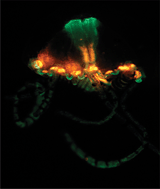 A team from Austin, Texas have reported two new proteins displaying primary structures never before encountered in natural FPs in a recently published PPS article. The proteins consist of multiple GFP-like domains repeated within the same polypeptide chain. A two-domain green FP (abeGFP) and a four-domain orange-fluorescent FP (Ember) were isolated from the siphonophore Abylopsis eschscholtzii and an unidentified juvenile jellyfish (order Anthoathecata), respectively.
A team from Austin, Texas have reported two new proteins displaying primary structures never before encountered in natural FPs in a recently published PPS article. The proteins consist of multiple GFP-like domains repeated within the same polypeptide chain. A two-domain green FP (abeGFP) and a four-domain orange-fluorescent FP (Ember) were isolated from the siphonophore Abylopsis eschscholtzii and an unidentified juvenile jellyfish (order Anthoathecata), respectively. 